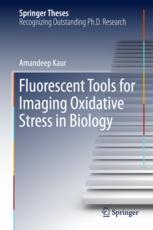

Most ebook files are in PDF format, so you can easily read them using various software such as Foxit Reader or directly on the Google Chrome browser.
Some ebook files are released by publishers in other formats such as .awz, .mobi, .epub, .fb2, etc. You may need to install specific software to read these formats on mobile/PC, such as Calibre.
Please read the tutorial at this link: https://ebookbell.com/faq
We offer FREE conversion to the popular formats you request; however, this may take some time. Therefore, right after payment, please email us, and we will try to provide the service as quickly as possible.
For some exceptional file formats or broken links (if any), please refrain from opening any disputes. Instead, email us first, and we will try to assist within a maximum of 6 hours.
EbookBell Team

4.0
56 reviewsThis thesis advances the long-standing challenge of measuring oxidative stress and deciphering its underlying mechanisms, and also outlines the advantages and limitations of existing design strategies. It presents a range of approaches for the chemical synthesis of fluorescent probes that detect reversible changes in cellular oxidative stress. The ability to visualise cellular processes in real-time is crucial to understanding disease development and streamline treatment, and this can be achieved using fluorescent tools that can sense reversible disturbances in cellular environments during pathogenesis. The perturbations in cellular redox state are of particular current interest in medical research, since oxidative stress is implicated in the pathogenesis of a number of diseases.
The book investigates different strategies used to achieve ratiometric fluorescence output of the reversible redox probes, which nullify concentration effects associated with intensity-based probes. It also describes suitable approaches to target these probes to specific cellular organelles, thereby enabling medical researchers to visualise sub-cellular oxidative stress levels, and addressing the typically poor uptake of chemical tools into biological studies.In total it reports on four new probes that are now being used by over twenty research groups around the globe, and two of which have been commercialised. The final chapters of this thesis demonstrate successful applications of the sensors in a variety of biological systems ranging from prokaryotes to mammalian cells and whole organisms. The results described clearly indicate the immense value of collaborative, cross-disciplinary research.